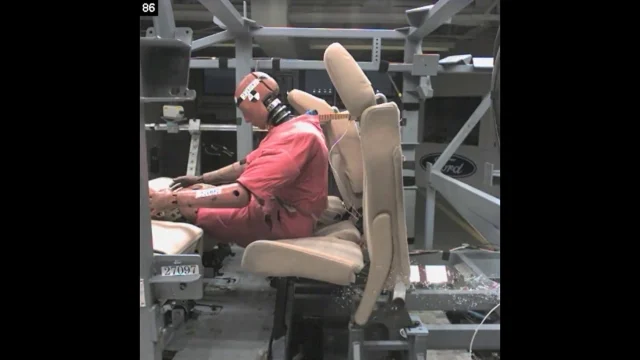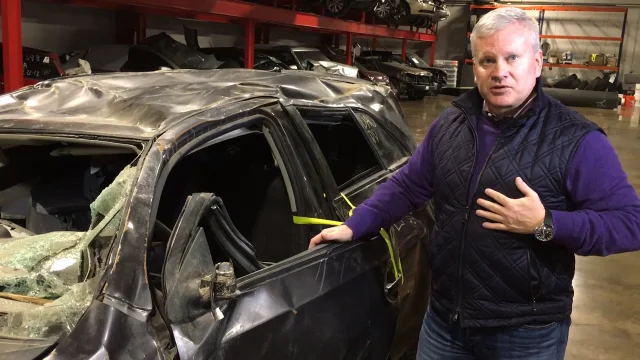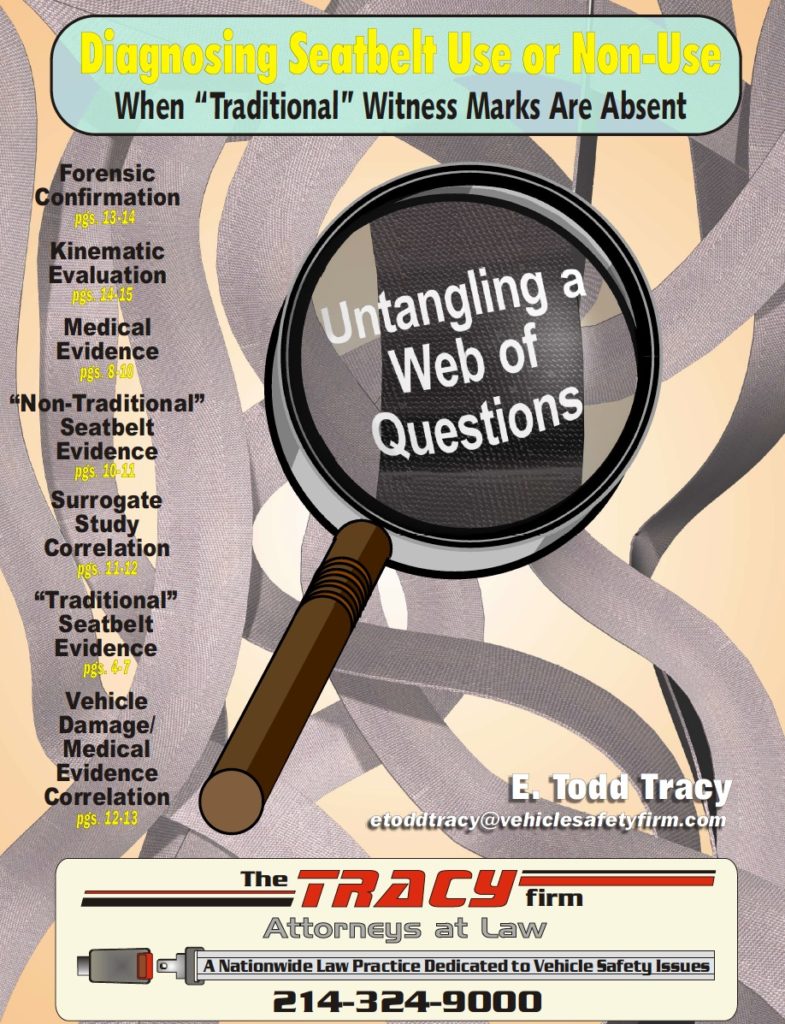
Restraining the occupant is one of the five principles of vehicle crashworthiness. It is the job of seat belts and airbags to work in tandem to prevent occupants from hitting the interior of the vehicle or from being ejected.
Table of Contents
ToggleDefective Seat Belts In A Car Accident
When an accident ejects an occupant from a vehicle, there is 13 times higher risk of injury to the person thrown out when compared to the people that remain inside the car. The most common injuries from defective seat belts are injuries to the head and neck, chest injuries, and injuries to the arms or legs; these injuries can lead to permanent disabilities.

Unrestrained Crash Test Dummies Ejected
Ejected occupants suffer severe head injuries, spinal fractures, crushed torso injuries, and death.
Accident investigators often mistakenly conclude that an ejected person was not wearing their seatbelt. Here’s why.
- Police officers lack the necessary engineering, medical and forensic training to accurately determine seatbelt use.
- Police officers do not have the time to properly analyze the physical, medical and forensic evidence to accurately determine belt use.
- Police officers routinely rely solely on the word of people in the vehicle as to whether they were belted rather than conduct a detailed seatbelt investigation.
We know that seatbelt buckles unlatch during crash tests because physics tricks the spring mechanism into releasing the belt.
Seat belts can fail for several reasons: Seat belts can unlatch during an accident. They can unlatch inertially when crash forces cause the buckle to release. They can unlatch inadvertently when accidentally hit by an occupant or something in the vehicle during the accident.
Defective Seat Belt Buckle / Retractors
The defective buckle is shown in the video below.

Seat belt retractors are supposed to lock and stay locked during an accident. However, defective retractors unlock in rollover accidents. It allows the belt to spool loose and let the occupant roll out of their seatbelt.
They fly out of the vehicle with catastrophic results, or their flailing loose arms and legs outside the vehicle get crushed or cut off.
The Tracy Law Firm’s Crash Lab conducts a thorough analysis of the physical, medical, and forensic evidence. We microscopically examine the seatbelt’s webbing to prove that a defective restraint system caused wrongful death or catastrophic injuries.
Dr. Mariusz Ziejewski, a professor of mechanical engineering, and expert in our crashworthiness cases, explains in this video.

Defective Side Curtain Airbags Fail To Prevent Occupants From Being Ejected
A side curtain airbag is supposed to keep a person’s head, arms, legs, and upper torso inside the passenger compartment during an accident. However, we represent catastrophically injured victims ejected because a defective side curtain airbag failed to deploy.
The biggest problem with side curtain airbags is defective sensor placement and electronic programming to detect the severity of the crash. Other issues include side airbags that do not fully cover windows and side panels.

Doors Have Been Flying Open In Crash Testing Since The 1930s
Even if the driver or passenger is wearing their seatbelt, their risk of ejection or partial ejection increases when a defective door flies open.
Ejection remains a high-risk today because many automakers use poorly designed door systems. The causes include defective door latches, door strikers, handles, sliding doors, and composite materials.
Todd Tracy explains in the following two videos that you may have grounds for a lawsuit if the door flew open and occupants suffered death or catastrophic injuries.


If An Accident Caused Death Or Catastrophic Injuries, Todd Tracy Will Conduct A Free Analysis For Your Case.

Download This Free Guide Below

